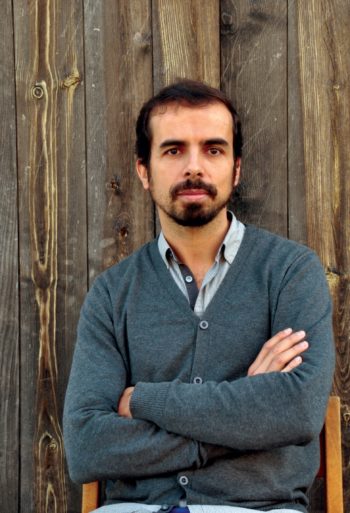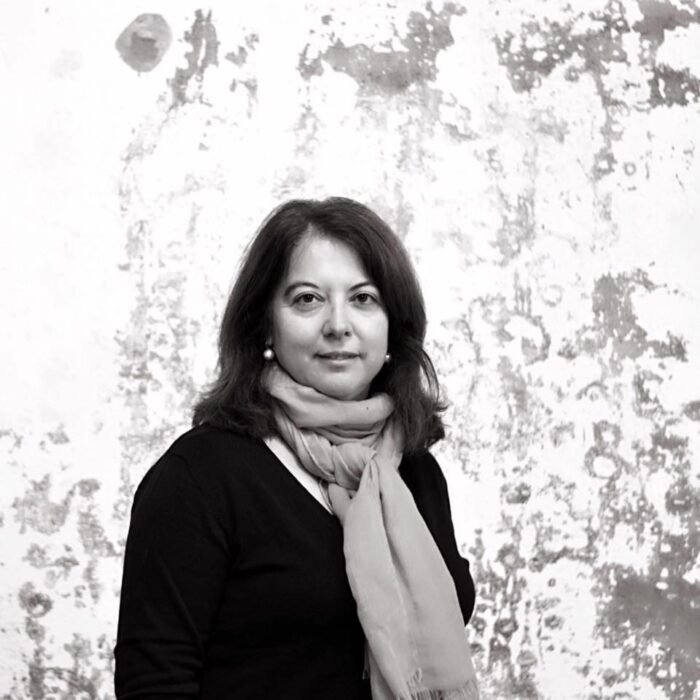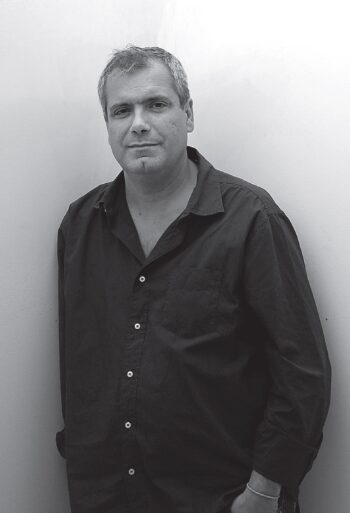A conversation with Nuno Carinhas

A conversation with Nuno Carinhas
'We are here [in the theatre] to question the world. (...) There are half a dozen essential human questions, and they are reflected in the history of theatre. (...) We can talk about anything, relating it to the present time'
You’re a painter, set designer, costume designer and director. Why this plasticity?
They are different ways of accessing the world. I had the need to experiment with different tools to adapt to my search, a kind of quest for a language and for what best corresponded to my concerns. I think theatre ends up being the sum of them all. It has a more universal form, perhaps. It’s the art that has the greatest possibility of expanding time. But everything is learning, it’s as if we had a very folded cloth and we started to open it up, fold by fold. Each fold is an experience that enriches and addicts us.
You studied painting, collaborated with the Gulbenkian Ballet, directed Operas, and made a short film. What have these experiences brought you?
They were things that just happened, I never really planned what I was going to do. Opportunities arose and, as a curious person who isn’t bound by a very strict idea, I gave myself to these tasks. I’m still a painting lover and I haven’t stopped drawing and painting, there’s a kind of addiction to the hand and the eye that continues, but I have little time left. The Gulbenkian Ballet started when I was still at school. There were some choreographic studios where I worked with Vasco Wellenkamp. Later, Jorge Salavisa, the company’s artistic director, wanted me to continue collaborating, which allowed me to try very different things. The opportunity to stage an opera materialized in the opera studio at Casa da Música. Then Paolo Pinamonti invited me to direct two small operas at the São Carlos Theatre and, more recently, I directed Blimunda, also at the São Carlos. The short film I directed was ‘Portrait on the Run’, which even won a jury prize at the Buenos Aires Short Film Festival. It was a project by Produções OFF/RTP that consisted of throwing people who were further back to the front of the line – such as ‘pushing’ lighting designers towards directors of photography – or bringing together people from other areas. It was a unique experience, still in 35mm.
In 1976 you were one of the founding members of A Barraca. How did your passion for theatre begin?
My parents belonged to an amateur theatre group run by Amélia Rey Colaço’s right-hand woman, who directed the company at the D. Maria II National Theatre. When I was five years old, I started watching shows, often going with my parents to rehearsals and listening to them memorize the texts at home. All this gave me a great intimacy with the theatrical object, with the before of the before of the show. I would fall asleep during rehearsals and, without realizing it, everything would resonate in my head… I knew Gil Vicente by heart.
Between 2009 and 2018 you were artistic director of the São João National Theatre (TNSJ). Was this the biggest challenge of your career?
I worked in Porto for several years, since Ricardo Pais became director of the TNSJ. He staged the first show and gave me the responsibility of doing the second, ‘The Great Theatre of the World’. I was the only artistic director of a national theatre because it was that theatre. It was a house I knew well, I identified with the project, and I was willing to embrace that team. It was a huge challenge. Being artistic director of a theatre entails the same responsibilities as managing a company, people are marked or not by the programs we propose and the strategies we design. We involve a city, our culture and we have international connections. In the three terms I’ve been at the helm of the TNSJ, we’ve been through very significant political and social events. We had to organize ourselves very well to keep the doors open and fight against the ideas of alienation and redundancies.
You wrote that in the theatre ‘we progress unsatisfied from question to question’. Is theatre a permanent questioning?
It must be. We’re not there just to create interesting and decorative environments, or tell stories to entertain people, we’re there to question the world, with texts that go from Ancient Greece to the present day. It’s possible to repeat themes from different eras because there are half a dozen essential human questions that are reflected in the history of theatre. The epochal differences lie in the way the big questions are asked and the way they are organized. And we are part of this system, we have this responsibility. We can talk about anything, relating it to the present time, which is why there is a permanent focus on why, what and now.
PHOTO: TUNA_TNSJ
This interview is an integral part of Revista Artes & Letras #165, june 2024
Partially automatic translation from portuguese: some expressions may differ from their actual meaning.
News & Interviews
A conversation with Arch. Paulo Pereira
'It would be very important for the landscape architect to be heard properly and the idea that he only comes to "add the flowers" later, must disappear' Read more
A conversation with Arch. Helena Botelho
'There are times when we have to think about how we can contribute to our society and profession. [In the Ordem dos Arquitectos] we have a critical view and the opportunity to put into practice a set of reflections’ Read more
A conversation with Arch. Manuel Aires Mateus
‘The client doesn’t draw with us, but we draw with his ambition, translating his individuality, and that takes us away from the banality of the answer’ Read more




